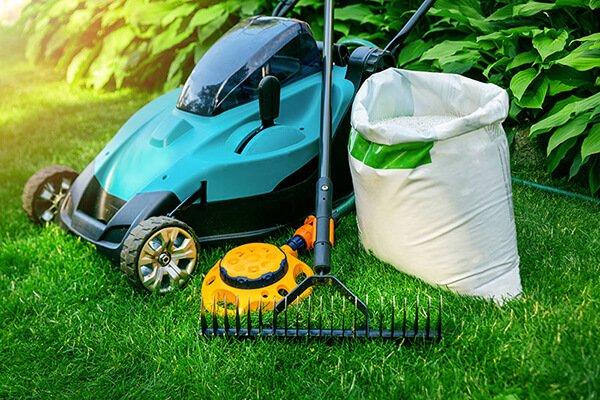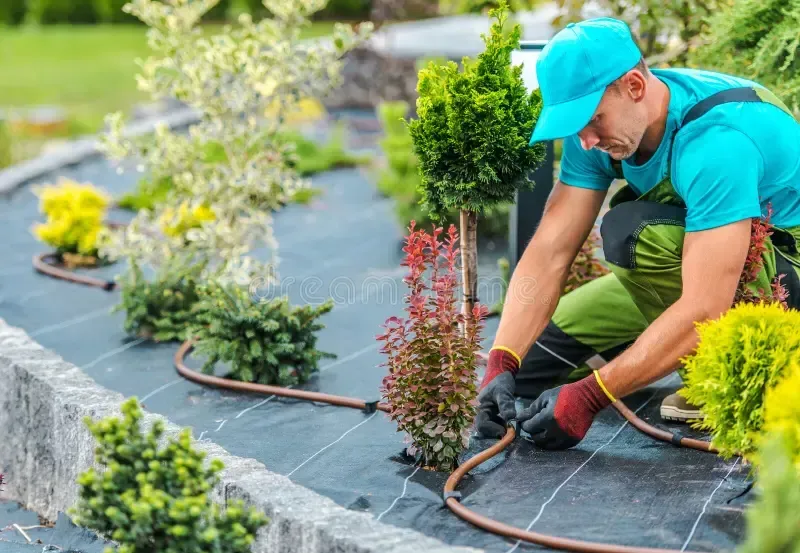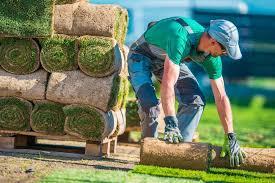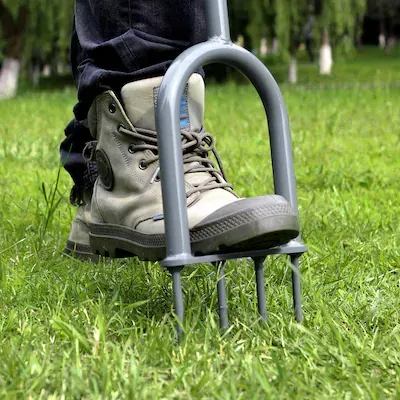
Transform Your Outdoor Space: Top 10 Landscaping Tips for a Beautiful Yard

A well-maintained landscape not only enhances the beauty of your home but also increases its value. Whether you’re a seasoned gardener or a novice, transforming your outdoor space into a stunning oasis can be a rewarding project. With the right approach and a bit of creativity, your yard can become a true extension of your home. Here are the top 10 landscaping tips you need to know to create a beautiful and functional outdoor space.
1. Start with a Plan
Before diving into any landscaping project, it’s essential to have a clear plan. Consider the layout of your yard, the existing plants and trees, and how you intend to use the space. Sketch out your ideas, taking into account areas for planting, pathways, patios, and other features.
2. Choose the Right Plants
Selecting the right plants for your climate and soil type is crucial. Opt for native plants that thrive in your area, as they require less maintenance and are more resistant to local pests. Additionally, consider the amount of sunlight different areas of your yard receive and choose plants accordingly.
3. Incorporate Hardscaping
Hardscaping elements like patios, walkways, and retaining walls can add structure and functionality to your landscape. These features not only define different areas of your yard but also provide a contrast to the softness of plants and greenery.
4. Create a Focal Point
A focal point draws the eye and adds interest to your landscape. This could be a stunning tree, a water feature, a sculpture, or even a beautifully designed flower bed. A well-placed focal point can tie the entire yard together.
5. Think About Maintenance

While a lush, green yard is beautiful, it’s important to consider the time and effort required to maintain it. Choose plants that are easy to care for, and think about adding mulch or ground covers to reduce the need for frequent weeding.
6. Use Layers and Textures
Incorporate a variety of plants with different heights, colors, and textures to create depth and visual interest. Layering plants in this way can make your yard feel more dynamic and less flat.
7. Focus on Curb Appeal
The front yard is the first impression visitors will have of your home, so make sure it’s inviting. Clean, well-maintained pathways, a neatly trimmed lawn, and a few carefully placed flower beds can make a big difference.
8. Add Lighting
Outdoor lighting enhances the beauty of your landscape and extends the usability of your yard into the evening hours. Consider adding path lights, uplights on trees, or even string lights for a cozy atmosphere.
9. Consider Water Conservation

Sustainable landscaping practices, such as using drought-tolerant plants and installing efficient irrigation systems, can help conserve water. Mulching and grouping plants with similar water needs are also effective strategies.
10. Personalize Your Space
Finally, make sure your landscape reflects your personality and lifestyle. Whether it’s a cozy fire pit area, a vegetable garden, or a play space for kids, tailor your yard to suit your needs and preferences.
By following these tips, you can create a landscape that’s not only beautiful but also functional and easy to maintain. Whether you’re starting from scratch or refreshing an existing yard, a well-designed landscape can provide years of enjoyment and add significant value to your home.
Blog > What is Landscaping?
What is Landscaping and Will it Work For My Lawn \ Garden?
What is landscaping, and will it work for my lawn or garden? Landscaping involves the art and science of designing, planning, and maintaining outdoor spaces. It’s about creating a visually appealing and functional environment that suits your needs. Whether you’re looking to enhance your lawn or transform your garden, landscaping can provide tailored solutions that work for your specific space, ensuring it thrives and looks its best.

The Most Common Techniques for Landscapping
The most common techniques for landscaping involve a blend of art and science to create beautiful, functional outdoor spaces. These techniques include selecting the right plants for your climate, designing with layers to add depth and texture, and incorporating hardscaping elements like pathways and patios. Proper irrigation, soil preparation, and regular maintenance are also essential components. By combining these strategies, you can achieve a landscape that is both aesthetically pleasing and sustainable.

The most common techniques for landscaping include a variety of methods designed to enhance the beauty and functionality of outdoor spaces. From carefully selecting plants that thrive in your specific environment to designing with layers that create depth and interest, each technique plays a crucial role. Hardscaping, such as adding pathways and retaining walls, provides structure, while proper soil preparation and irrigation ensure a healthy landscape. Regular maintenance is key to keeping your outdoor area looking its best.
What is Aerator?
An aerator is a tool used in lawn care to improve soil health and promote better grass growth. It works by creating small holes in the soil, allowing air, water, and nutrients to penetrate deeper into the ground. This process helps reduce soil compaction, enhances root development, and leads to a healthier, more resilient lawn. Aeration is especially beneficial for lawns that experience heavy foot traffic or have dense soil, as it encourages optimal growing conditions.

More to Know About Landscaping
Landscaping is more than just arranging plants and flowers; it involves a comprehensive approach to designing and maintaining outdoor spaces. From understanding soil types and selecting the right plants for your climate to incorporating hardscaping elements like patios and walkways, landscaping requires careful planning and execution. Additionally, regular maintenance, including pruning, fertilizing, and irrigation, is crucial to keeping your landscape thriving year-round. There’s always more to learn and consider when it comes to creating and sustaining a beautiful and functional outdoor environment
Contact Us
Service Hours
Social Media
4216 54 Ave SE, Calgary, AB T2C 2E3
(587) 718-7713
Monday - Friday: 9:00 AM - 5:00 PM
Saturday: 10:00 AM - 2:00 PM
Sunday: Closed




Blog > What is Landscaping?
What is Landscaping and Will it Work For My Lawn \ Garden?

What is landscaping, and will it work for my lawn or garden? Landscaping involves the art and science of designing, planning, and maintaining outdoor spaces. It’s about creating a visually appealing and functional environment that suits your needs. Whether you’re looking to enhance your lawn or transform your garden, landscaping can provide tailored solutions that work for your specific space, ensuring it thrives and looks its best.
The Most Common Techniques for Landscaping
The most common techniques for landscaping involve a blend of art and science to create beautiful, functional outdoor spaces. These techniques include selecting the right plants for your climate, designing with layers to add depth and texture, and incorporating hardscaping elements like pathways and patios. Proper irrigation, soil preparation, and regular maintenance are also essential components. By combining these strategies, you can achieve a landscape that is both aesthetically pleasing and sustainable.

What is Aerator?
An aerator is a tool used in lawn care to improve soil health and promote better grass growth. It works by creating small holes in the soil, allowing air, water, and nutrients to penetrate deeper into the ground. This process helps reduce soil compaction, enhances root development, and leads to a healthier, more resilient lawn. Aeration is especially beneficial for lawns that experience heavy foot traffic or have dense soil, as it encourages optimal growing conditions.
More to Know About Landscaping
Landscaping is more than just arranging plants and flowers; it involves a comprehensive approach to designing and maintaining outdoor spaces. From understanding soil types and selecting the right plants for your climate to incorporating hardscaping elements like patios and walkways, landscaping requires careful planning and execution. Additionally, regular maintenance, including pruning, fertilizing, and irrigation, is crucial to keeping your landscape thriving year-round. There’s always more to learn and consider when it comes to creating and sustaining a beautiful and functional outdoor environment
Contact Us
(587) 718-7713
4216 54 Ave SE, Calgary, AB T2C 2E3
Service Hours
Monday - Friday: 9:00 AM - 5:00 PM
Saturday: 10:00 AM - 2:00 PM
Sunday: Closed
Social Media




![Business Name - [keyword]](https://images.leadconnectorhq.com/image/f_webp/q_80/r_1200/u_https://assets.cdn.filesafe.space/5bDPMwfixf0W49uKivaD/media/66d77625cccab215a34e8f44.png)
2021 | GreenThumb Ai | All Rights Reserved
Privacy Policy | Site Map
